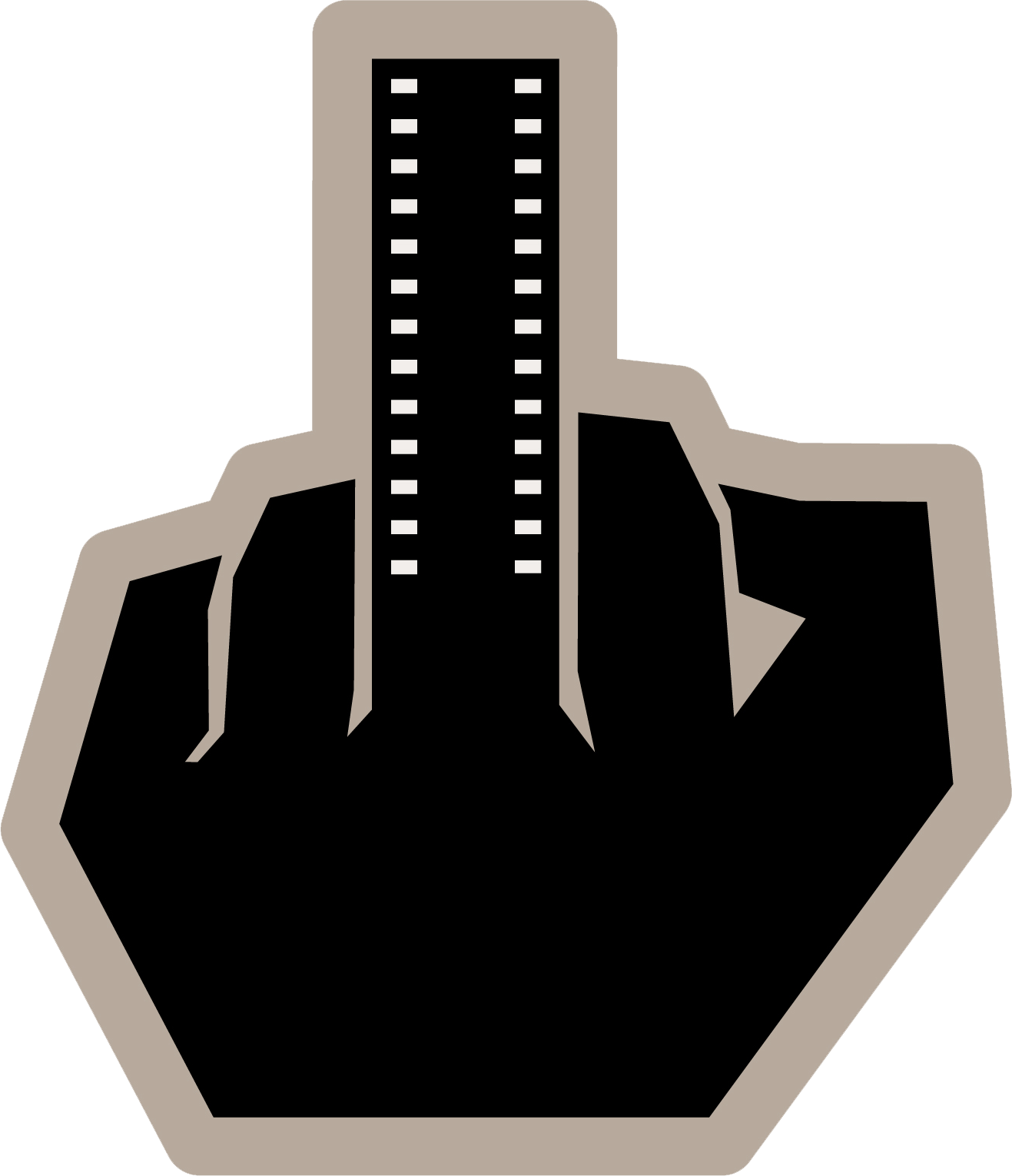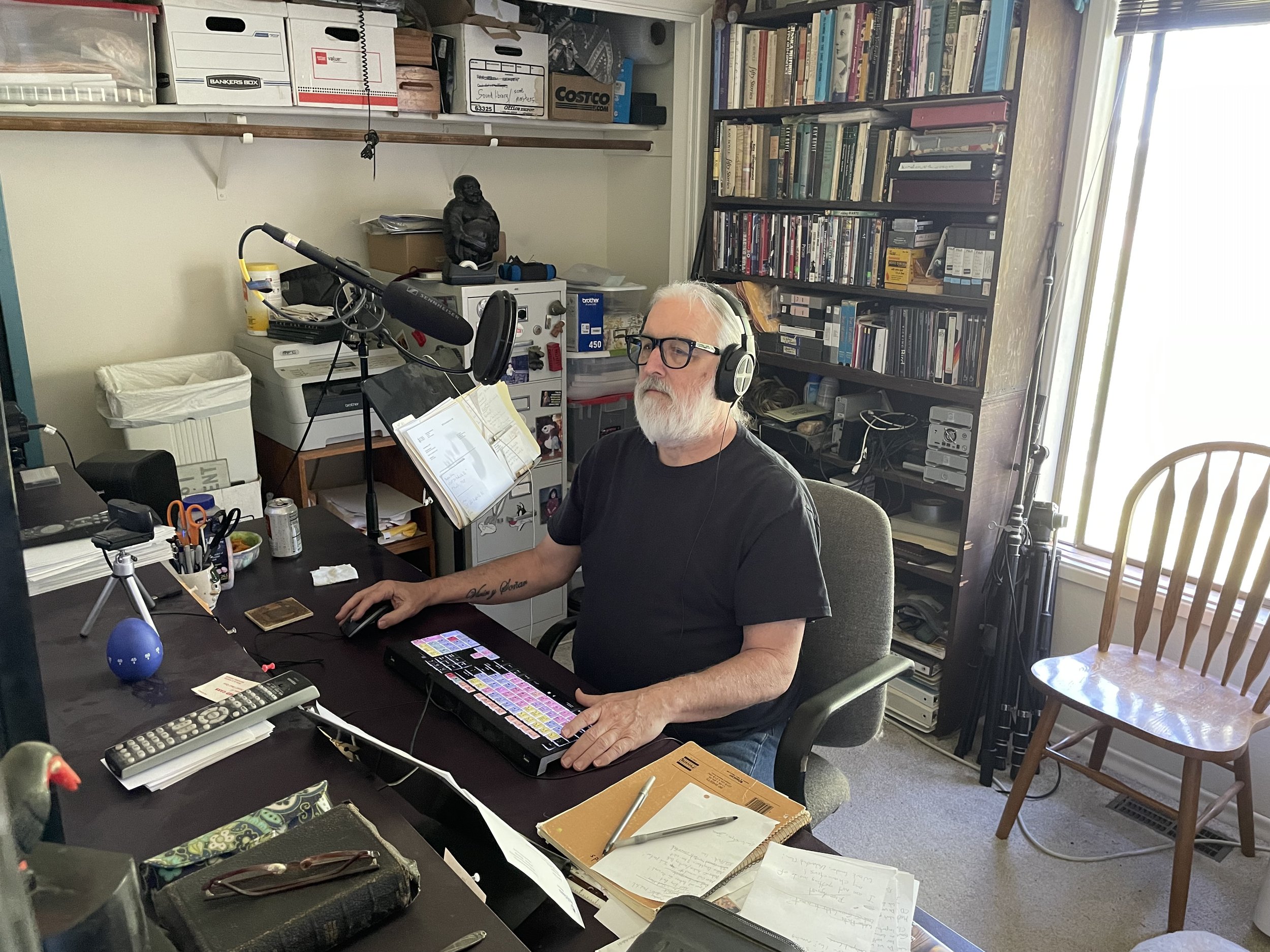My Editing Journey - - Part Two
When We Last Left Our Hero...
When video editing arrived. I was supposed to edit a film on a “professional” VHS editing system, which would later be on-lined at an expensive editing facility which was how it was done back then. The Producers knew I had no experience with video but I had edited a lot of their films. I convinced them I could learn to edit on their system and I’d give them a discount on my rate. This was something I needed to learn.
Then I got sick. Not a little sick, but full blown in the hospital having my appendix removed, sick. I wasn’t allowed to do anything for a couple of months and the Producers couldn’t wait so they hired someone else. I totally understood.
When I finally recovered I saw myself losing different editing jobs because I didn’t know the equipment.
I was talking with a friend of mine who told me that one of the local TV stations was looking for a vacation relief cameraperson for the summer. He gave me a name and a number. I set up an appointment and got an interview. When I handed the fellow my resume it didn’t say cameraperson anywhere. It just said editor. After a moment he looked at me and before he could say anything I said, “I’m not much of a cameraperson but I can edit like nobody else!”
“We could use an editor… I think that could work.
I quickly asked what kind of editing systems they had and when he replied Sony, I lied and said I only had experience with JVC. He assured me they were similar, hired me, and assigned someone to teach me how to use the Sony equipment. That’s how I learned how to edit video, by cutting news.
As an editor I was used to laboring over every edit to make it as good as possible. What I learned editing news was, they didn’t really give a shit about the quality of the editing. All they cared about was you were fast, didn’t miss on-air deadlines, and there were no black holes in the stories you cut. A lot of times you had 10-15 minutes to edit a 2 minute news story before it went out on the air. Half the time you never had a chance to watch the story because you were handed two or three more stories to cut ASAP.
I did this for about eight months and then my other work picked up so I quit. No one at the station ever knew that I didn’t know how to edit video before I started. I believed that as an editor I could pick up a different piece of equipment and learn it quickly.
Editing news taught me how to cut fast and walk away from the story. Forget about it. This turned out to be a huge help when I went back to editing films and longer pieces. I no longer labored over ever cut. I went with my gut and treated things like a first draft. I edited whole pieces quickly, then took the time to go back and look at things in context. I found that 80-90% of the time my first edits were the correct ones. I didn’t need to labor over them.
I also believe the more you edit the faster you can go, and you have the experience to know what things are going to work quicker than when you started out.
The problem I had with a lot of this new technology was most of the new editing systems were created by engineers or software people and no one ever bothered to consult with a film editor. They were using a different language which made no sense to people with a film background. I will admit that I had trouble adapting to some of these video systems at first.
When I worked on Good Will Hunting, I flew to New York for a screening. Since it was a studio film, I flew first class and I was met by a driver holding up a sign for me at the airport. He was a nice fellow probably in his late forties, just a guess. As he drove me to the hotel he asked what I did and I told him I was the Sound Designer on the film. He told me he used to be a film editor, worked in the business for years. Now he couldn’t get work. He said he could never get the hang of editing in Avid, the way it was set up wasn’t intuitive for a film editor.
As we talked, I quickly realized he knew a lot about film editing. He explained to me the problems he had switching to Avid, and they were things I struggled with as well. Since he could no longer get editing work, his brother-in-law owned the car service so now he was driving people around instead of doing what he loved. I realized right then, if I didn’t embrace the new technologies I could end up being out of the business and working a job I didn’t like.
When he dropped me off at the hotel I wished him luck and gave him a big tip, probably out of guilt.
We edited my first feature film on a very crude editing system called the D-Vision. The resolution was lousy but it had a feature where you could input the key numbers from the 35mm original negative and it would track those key numbers correctly no matter how many versions of the film you cut.
When it came time to have the negative cut for final prints we walked through all 100 minutes of the film (set up as reels) one shot at a time checking key numbers. That system slipped one frame over the entire film. The key number list we sent to the negative cutters was absolutely perfect. When I finally saw a 35mm answer print of Birddog it was absolutely in sync. That was pretty amazing.
One of the great things about the motion picture business was that the people who designed and invented a lot of the equipment we used over the years got together and made certain things standard. They created the SMPTE, (the Society of Motion Picture Technicians and Engineers), so it didn’t matter who built a camera, location recorder, or editing system, at the end of the day all of the specs were the same throughout the business. Everything was set up for 24 frames per second.
When all of these new video companies popped up with their new video/digital cameras, they had no real industry standards. There have been so many different formats that it’s impossible to keep track of all of them. It was the same with editing systems. Now it appears that there are some standards so if you can learn one system you can pretty quickly figure out another. I still continue to complain that no matter how far we’ve come with this new technology it’s still been designed more by engineers and software people than the actual folks who use this stuff professionally.
I learned how to edit on so many different systems, most of which are no longer around. The technology keeps changing, but the editorial skills don’t. All the editing rules still apply.
I no longer have my old upright Moviola, KEM flatbed, rewinds, synchronizers, squawk box, or any of the things I regularly used as a film editor.
As I wrote last week, I have three different picture editing programs, Avid, Premiere Pro, and DaVinci Resolve on my computer. I no longer use Avid but I’m pretty good with the other two. I also use Pro Tools and I’m learning Fairlight for Audio.
I prefer making my own films, but a guy has to make a living.
I’m very lucky, I still love editing, both picture and sound, and with the experience I’ve accumulated after all these decades, I’m pretty good at what I do although I still have so much to learn. And like David Lean, I feel like I can edit myself out of any corner that I got myself into as a director
Now I just hope I won’t be called upon to edit Gunsmoke again, although somewhere in a box I still have my old Revis film splicer, just in case.
Thanks for reading and subscribing.
___________________________________________________________
Substack ANNOUNCEMENT – Since I started my Substack I have kept everything free. Anyone can read it at no charge. That part is not going to change. Everything is still going to be free, but starting next week I’m going to open up the pay option. I think that’s how you say it…
Some of you have already pledged to pay for a subscription to my Substack and I’m truly grateful that you see value in the things I’m writing here. The truth is, money is tight and as much as I would like to keep this all totally free, whatever any of you would like to send my way is appreciated. I believe you can also cancel your subscription at any time.
I won’t be offering any exclusive content for subscribers, not at this point anyway. My plate is full just write these weekly posts along with the other things I have going on.
Thank you for continued support.
Don’t let the bastards get to you!
Please Support Independent Artists! Even the crazy ones.
If you want to check out any of my books, films, or Angry Filmmaker merchandise head on over to my website. www.angryfilmmaker.com
Follow me on Substack - https://substack.com/@kelleybakerangryfilmmaker
Instagram - https://www.instagram.com/angryfilmmaker/
Facebook - https://www.facebook.com/kelley.baker




